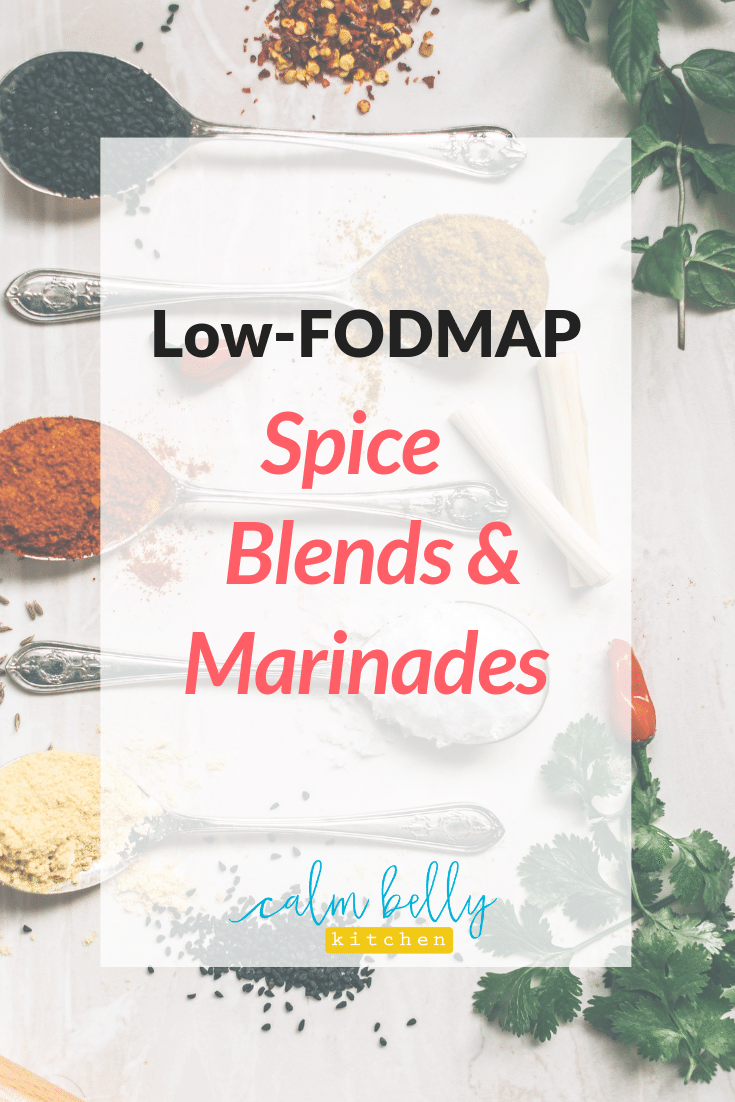When & how to reintroduce FODMAPs? (3 simple ways to know!)
Pin It!
When you start the FODMAP Diet, the goal is to hit the reset button on your body by eliminating as many high-FODMAP foods as possible.
But how do you know when it’s time move out of that restrictive phase and bring FODMAPs back into your diet? And how do you reintroduce FODMAPS?
It’s not about a certain period of time, and it’s definitely not about being 100% symptom-free.
Instead there are 3 specific factors that let you know when to test your FODMAP tolerance so you can eventually enjoy a whole lot more variety in your diet.
Keep reading to learn if it's time for YOU to test FODMAPs. Or watch this episode of Calm Belly TV to go even deeper. I cover the 3 factors in about the first 10 minutes, but if you’re not pressed for time there are some great Q&As from the live viewers!
Ready to challenge and reintroduce high-FODMAP foods?
Click to get your FREE Reintroduction Checklist!
(Watch the video or scroll down to read about the 3 factors!)
When is it time to reintroduce FODMAPs?
#1 You've seen consistent improvement in your IBS symptoms
You don’t have experience 100% improvement in symptoms
75% improvement is awesome, 50% is still great
At 50-75% improvement you feel well enough to easily recognize reactions to high-FODMAP foods when you test them
If you do the elimination phase for 6 to 8 weeks, feeling that level of symptom relief for about a 4-week period qualifies as consistent
#2 You've identified other factors that affect your digestion
Other factors include stress in all its forms, hormonal fluctuations, exercise level, the overall volume of food you eat, the timing of meals, or how fast you eat
Your goal during the FODMAP testing phase is to keep your IBS symptoms as well-controlled as possible, so understanding those other factors is an important part of the elimination phase
Becoming more aware of your body and what it needs (NOT a common skill!) is one of the great side effects of the elimination phase
#3 You have a black belt in taking FODMAPs out of your diet
In other words, you’re really good at doing the elimination phase, and you know what your body feels like when you have maximum symptom control (remember, that doesn't necessarily mean being symptom-free - see #1).
This is important so you can recognize reactions when you test high-FODMAP foods in the reintroduction phase.
Here’s what a black belt in FODMAP looks like:
You know you’re not missing any hidden FODMAPs in your meals
You understand how portion sizes impact FODMAP load
You know where sneaky FODMAPs can hide in restaurant meals
You’re good at checking ingredients lists
You’re super-comfortable using the Monash app
You’ve got plenty of tasty go-to meals and snacks
>>> All of the above means you’ll be able to easily test your FODMAP tolerance for those high-FODMAP foods without the stress of what to eat the rest of the time. It’s also a helpful skill because you can fall back on it during stressful times or health challenges that might come up in the future.
When you can check off the 3 items above, it’s time to move onto the reintroduction phase and test your personal tolerance to the various types of FODMAPs.
Key Takeaway
Most people with IBS can add certain high-FODMAP foods and categories back to their diets and still feel great. But the only way to know which FODMAPs are your friends is to test!






























